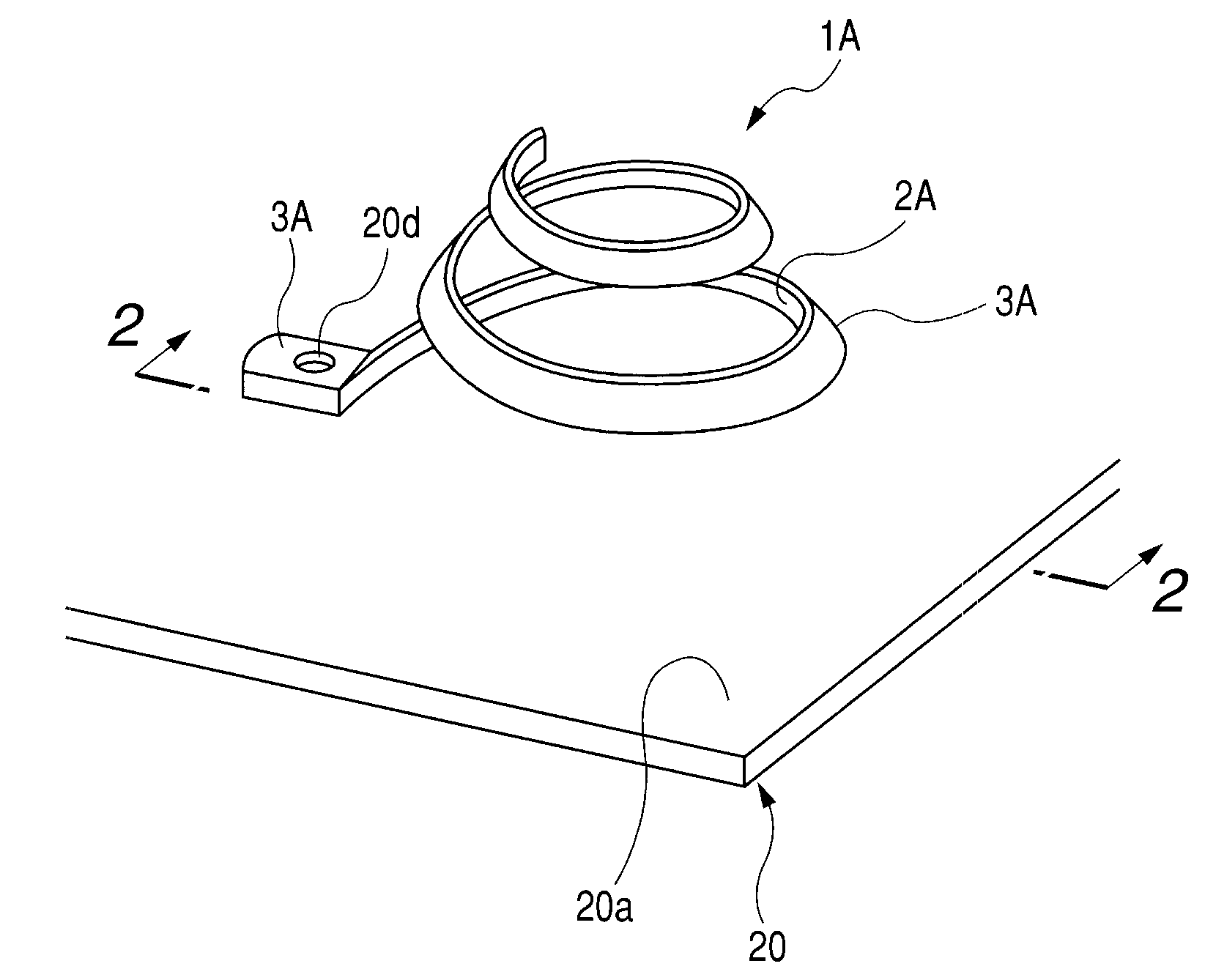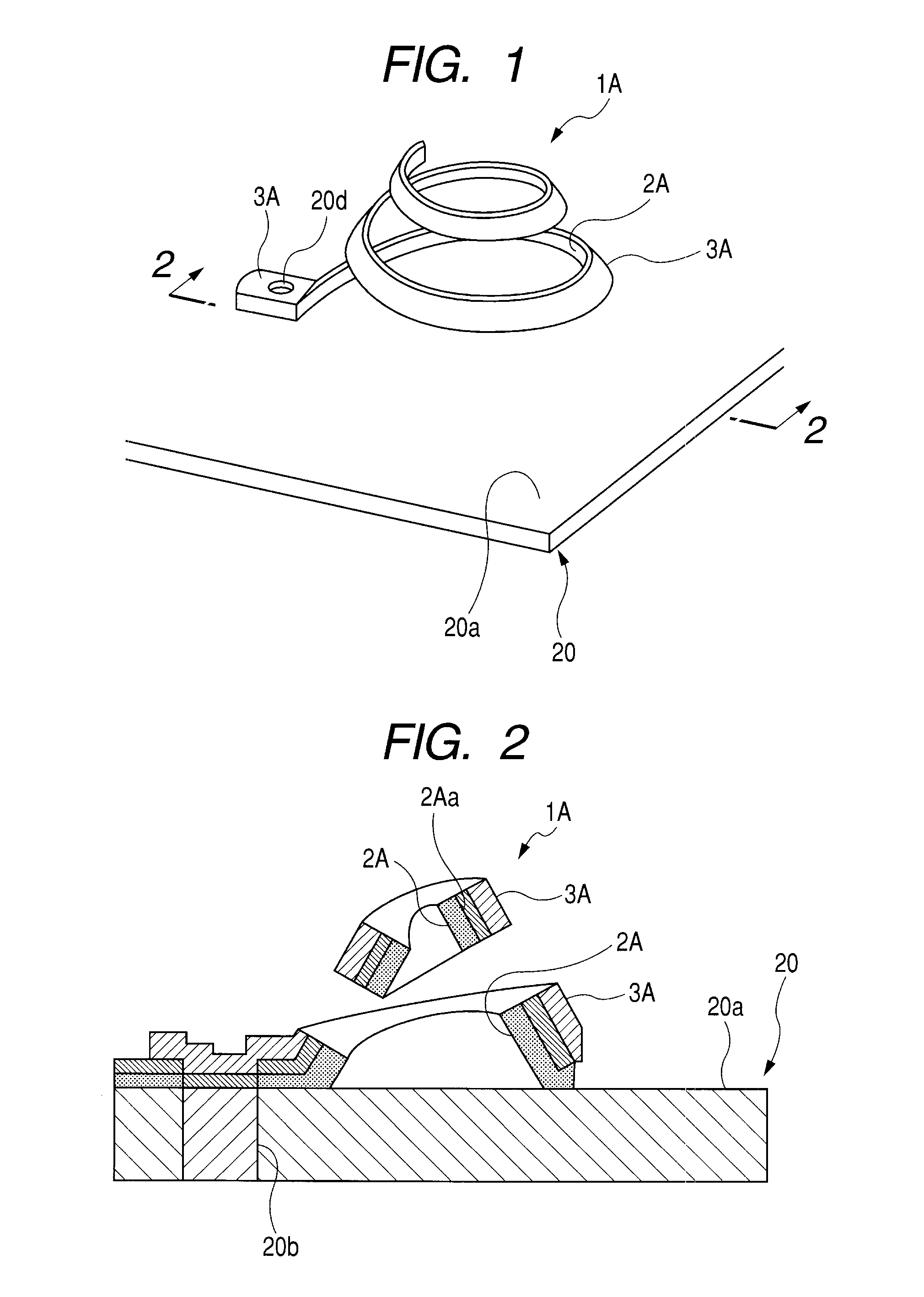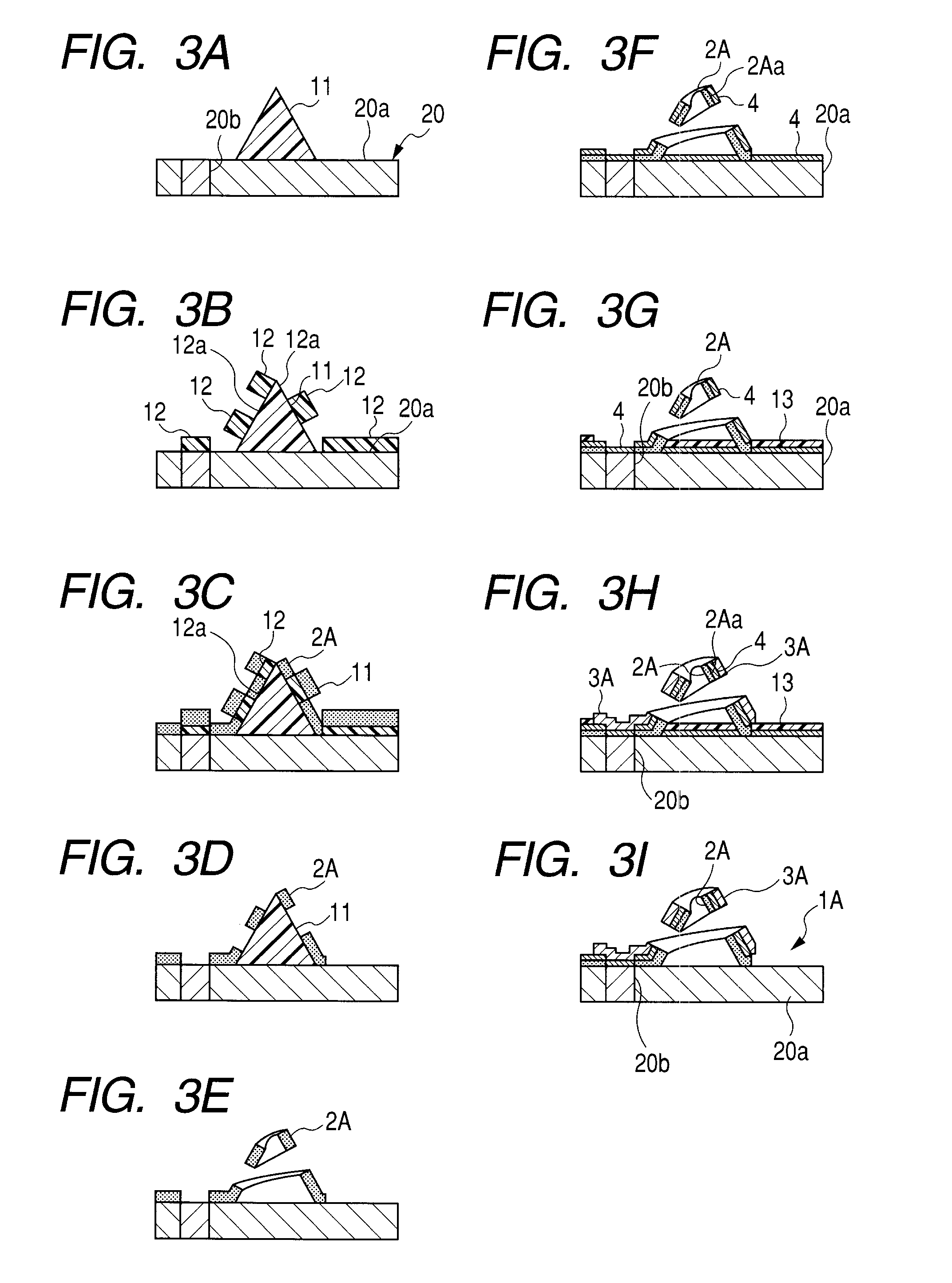Contact made of ceramic and its manufacturing method
a technology of contact and ceramics, applied in the field of contact, can solve the problems of permanent deformation and yield of contact, adverse effect of magnetic field, and magnetic field formation
- Summary
- Abstract
- Description
- Claims
- Application Information
AI Technical Summary
Benefits of technology
Problems solved by technology
Method used
Image
Examples
first embodiment
[0067]As shown in FIGS. 1 and 2, the contact 1A of the first embodiment includes a spring portion 2A and a conductive portion 3A.
[0068]The spring portion 2A is formed on the surface of a wiring substrate 20a of a probe card 20, using ceramic. If the shape of the spring portion 2A is the shape of a spring that exhibits an elastic force in a vertical direction, such as a coil spring, a leaf spring, or a disc spring, various shapes can be selected. As the shape of the spring portion 2A of the first embodiment, a convex solid spiral shape that protrudes toward a bump (upper portion of FIG. 2) is selected. In that case, the spring portion 2A is dimensioned such that the diameter thereof is about 200 μm, and the height thereof is about 100 μm.
[0069]Further, the spring portion 2A is formed by an aerosol deposition method capable of forming the spring portion at room temperature. The aerosol deposition method is a film-forming method that mixes ceramic particulates with inert gas within a c...
second embodiment
[0104]As shown in FIG. 5, the contact 1B of the second embodiment includes a spring portion 2B and a conductive portion 3B.
[0105]The spring portion 2B is formed on the surface of the wiring substrate 20a of the probe card 20, using ceramic. The spring portion 2B is the same as that of the first embodiment.
[0106]The conductive portion 3B has a surface-side conductive portion 7B that covers a surface 2Ba of the spring portion 2B that faces the bump using a conductive material, and a back-side conductive portion 8B that covers a back 2Bb. Further, the surface-side conductive portion 7B and the back-side conductive portion 8B are electrically connected as they are formed continuously. That is, the second embodiment is different from the first embodiment in that the conductive portion 3B is formed even on the back 2Bb of the spring portion 2B. The conductive material used for the surface-side conductive portion 7B and the back-side conductive portion 8B mainly includes metals, such as Cu...
third embodiment
[0132]As shown in FIG. 7, the contact 1C of the third embodiment includes a spring portion 2C and a conductive portion 3C.
[0133]The spring portion 2C is formed on the surface of the wiring substrate 20a of the probe card 20, using ceramic. The third embodiment is different from the first embodiment and second embodiment in that the spring portion 2C is formed by sputtering and sintering ceramic. As the ceramic, zirconia-based ceramic, particularly, stabilized zirconia is selected. This point is the same as that of the first embodiment and second embodiment.
[0134]The conductive portion 3C has a surface-side conductive portion 7C that covers a surface 2Ca of the spring portion 2C that faces the bump, and a back-side conductive portion 8C that covers a back 2Cb. Further, the surface-side conductive portion 7C and the back-side conductive portion 8C are electrically connected as they are formed so as to contact each other. The conductive portion 3C is the same as that of the second embo...
PUM
| Property | Measurement | Unit |
|---|---|---|
| height | aaaaa | aaaaa |
| height | aaaaa | aaaaa |
| thickness | aaaaa | aaaaa |
Abstract
Description
Claims
Application Information
 Login to View More
Login to View More - R&D
- Intellectual Property
- Life Sciences
- Materials
- Tech Scout
- Unparalleled Data Quality
- Higher Quality Content
- 60% Fewer Hallucinations
Browse by: Latest US Patents, China's latest patents, Technical Efficacy Thesaurus, Application Domain, Technology Topic, Popular Technical Reports.
© 2025 PatSnap. All rights reserved.Legal|Privacy policy|Modern Slavery Act Transparency Statement|Sitemap|About US| Contact US: help@patsnap.com



